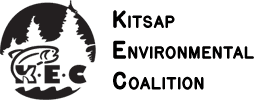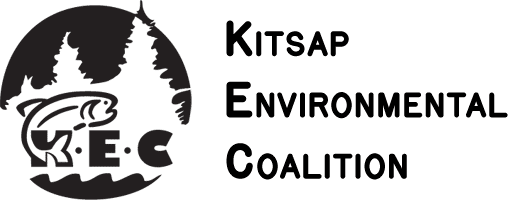Good evening. I’m April Ryan from Kingston, and I appreciate this opportunity to participate in planning our future together. I’m also a co-chair of the KEC Steering Committee. However, tonight, I’m speaking for myself about the important step the County has made in adding Climate Change to the Comprehensive Plan.
While this is a commendable first step, this new chapter needs to be strengthened. Despite claiming a ‘proactive’ approach to climate change, the chapter’s language, goals, and strategies lack conviction. It uses words like ‘consider’ (at least 10 times) instead of the more actionable terms used elsewhere in the Comp Plan.
Moreover, the rationale for including this new section is written as though it is only legislatively mandated—as if, “Yes, we’ll comply because it’s the law, not because we understand it is vital to our survival.”
We, the citizens, need our leaders to have the conviction to build and implement a Climate Action Plan that we can all work together to achieve — most basically:
- Mitigation – reduce GHG emissions & reduce over-consumption
- Adaptation – restore resiliency to change by increasing diversity
- Community Engagement through leadership and education
It is more complicated than that, but starting with the Comp Plan as drafted, I have submitted more detailed suggestions for strengthening the language and adding goals. I also strongly support moving the Climate Change chapter to the front of the Comp Plan, where it can inform a consolidated framework.
Thank you very much!
April Ryan, Kitsap County
Here are a few suggestions (red is new/change) for strengthening the Climate Change Chapter:
Vision (p 142)
County services, local economy, communities, and natural resources and systems are resilient to a changing climate and Countygreenhouse gas emissions are reduced. consistent with regional goals. Have the vision and intent to mitigate the effects of climate warming and to limit the local contribution to greenhouse gases driving these changes.
Intent (p 142)
The intent of this chapter is to provide a consolidated policy framework related to climate issues that is essential to facilitating planning for our county and to assist in meeting the planning goals of the Growth Management Act. that supports establishing land use and development regulatory mechanisms that implement climate resilience. (more intentional and explicit, less soft waffling and leaning on policy)
Define Climate Change in real (not abstract) terms: The climate is warming rapidly, and greenhouse gases are contributing to this change, resulting in:
- Increased extreme heat events.
- High wind events.
- More frequent and extended summer droughts.
- More intense rainfall events with increased risk of stream flooding and erosion.
- Power outages and brown-outs.
- Increased risk of wildfires and wildfire smoke.
- Shoreline flooding and erosion.
- Changes in flora and fauna in response to these climate changes.
Kitsap County Climate Change Resiliency Assessment, 2020 (p 144)
The assessment is based on the best available science at the time and considers recognizes the probability of a wide range of impacts…wildfires.
Climate Change Goal 3. Economy (p 152) (Add, also applies to supporting sustainable Economic development.)
Climate Change Strategy 3.4. Develop, implement, and periodically update the Shoreline Master Program and coastal resiliency plans to mitigate and adapt to climate change impacts. Do not develop in areas at risk for sea level rise & flooding.
Climate Change Goal 6. Public Infrastructure and Transportation Network (p 153)
Climate Change Policy 6.3. Consider Implement stormwater utility improvements to accommodate increased conveyance during extreme rain events and coastal flooding.
(Add the following:)
Climate Change Policy 6.6. Encourage and incentivize using more efficient appliances, heat pumps, and roof-top solar to reduce the demand on the power transmission grid.
Climate Change Policy 6.7. Enhance the safety of power transmission grid to avoid brown-outs, outages, failure from wildfire and danger of wildfire ignition.
Climate Change Policy 6.8. Create a bicycle/pedestrian transportation network plan on existing roadways to encourage the use of non-motorized transportation to reduce vehicle miles driven.
Climate Change Goal 7. Resiliency Through Land Use (p 155)
Climate Change Policy 7.3. Consider Prevent or mitigate environmental justice impacts to overburdened communities when considering new land use designations and rezoning actions.
Climate Change Goal 8. Protect and enhance forests
Climate Change Policy 8.1. Consider Design an urban forest master plan and applicable development regulations to maintain and expand tree canopy cover, improve watershed health, prioritize carbon sequestration, and build climate resilience.
Climate Change Strategy 8.b. Provide vegetation guidance to promote the planting of species that are resilient to climate change. Recommend planting seed stock of indigenous species that are more resilient to climate warming.
Climate Change Goal 9. Hydrology and Hydrogeology (p 156)
Climate Change Policy 9.1. Prioritize green infrastructure and low-impact development techniques, where appropriate, to address increased storm events, stormwater runoff, and local ocean acidification seawater oxygen depletion due to nutrient loading from runoff. Ocean acidification is a world-wide effect of increasing CO2. Excess nutrients in runoff causes algal blooms and oxygen depletion when the algae die and decay.
Climate Change Strategy 9.b. Provide guidance to promote the use of smart irrigation, stormwater nutrient management,preventative maintenance, water conservation and wastewater reuse, plant selection, and landscape management. Encourage the creation of farm plans through the conservation district to achieve these goals.
Climate Change Strategy 9.4 (p158) Reevaluate the County’s policy and practices around vesting projects since vesting ties a project to outdated regulations that do not consider the importance of climate change efforts now beginning to be recognized and implemented.
(Let Arborwood be a lesson learned, we can not afford to continue making irresponsible environmental mistakes.)
Climate Change Policy 11.3. (p159) Consider Ameliorate climate change impacts including sea level rise, extreme precipitation, increased streamflow, and other impacts in floodplain management planning.
Climate Change Policy 11.6. (p160) Consider Mitigate for sea-level rise in coastal and nearshore habitat restoration projects.
Climate Change Strategy 11.b. Maintain and update a critical areas ordinance that incorporates climate change considerations strategies.
Climate Change Goal 13. Emissions Reduction (p162)
Climate Change Strategy 13.b – Work with GPC and other organizations and stakeholders to identify appropriate forest lands to be secured by the County or other partners as Community Forest Lands and managed to maintain their carbon sequestration properties.
Climate Change Goal 14. Building Decarbonization (p164)
Climate Change Strategy 14.c. Explore funding and collaboration with community partners on incentives connecting homeowners and renters to energy efficiency opportunities (e.g., appliances, weatherization, solar panels, heat pumps, tankless water heaters, using appliances during non-peak times).
Climate Change Goal 16. Park and Open Space Tree Canopy (p165)
Manage tree canopy within park and open space areas to sequester carbon, clean and cool the air, retain water, build soil, and provide vital habitat for the entire food chain.
(Encourage/incentivize retention and increase of tree canopy EVERYWHERE, not just in parks. Trees must be universally valued across urban, suburban, and rural areas, whether public or private land. Trees are not decorative; they are essential for our environmental health and the restoration of ecological balance in our region. If adopted worldwide, we would not be at this climate crisis point.)
Climate Change Goal 19. Solid Waste and Wastewater Emissions Reduction (p166)
Climate Change Policy 19.1.a. Educate the public about reducing waste and adopting conservation measures to benefit themselves and their communities.
Climate Change Policy 19.3. Consider Facilitate methods to deal with solid waste locally, thereby reducing emissions associated with transportation to out-of-state landfill facilities.

